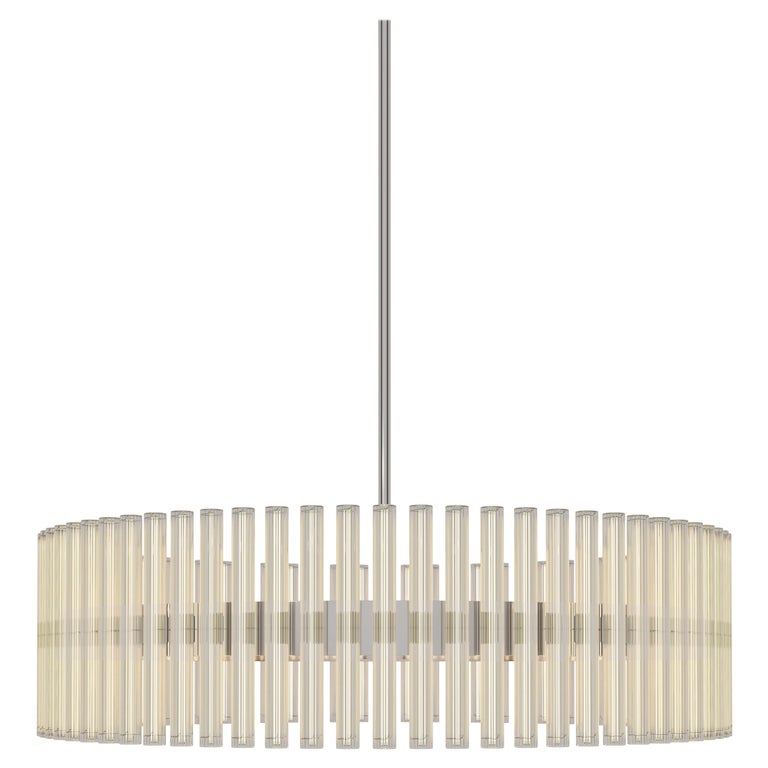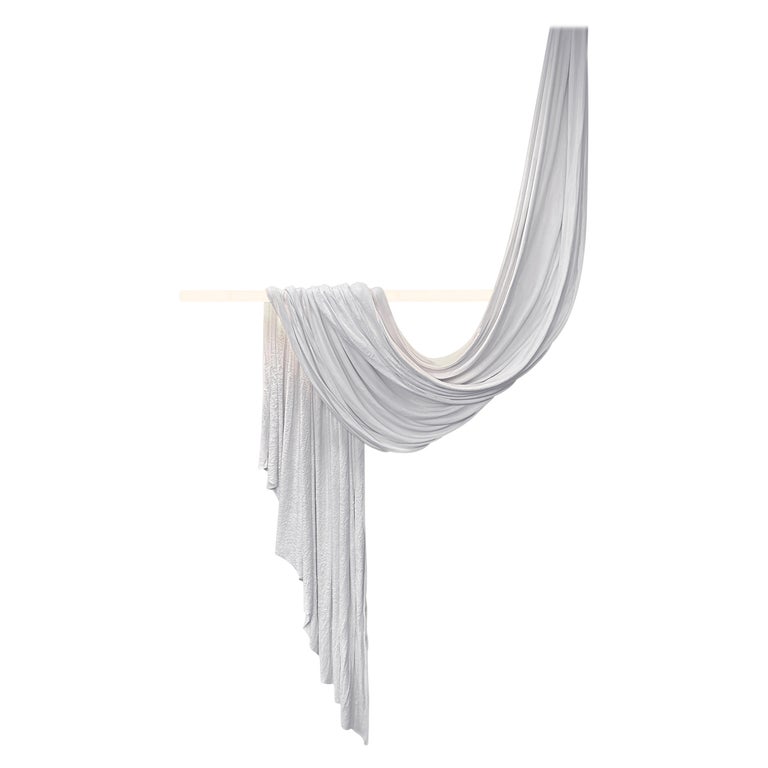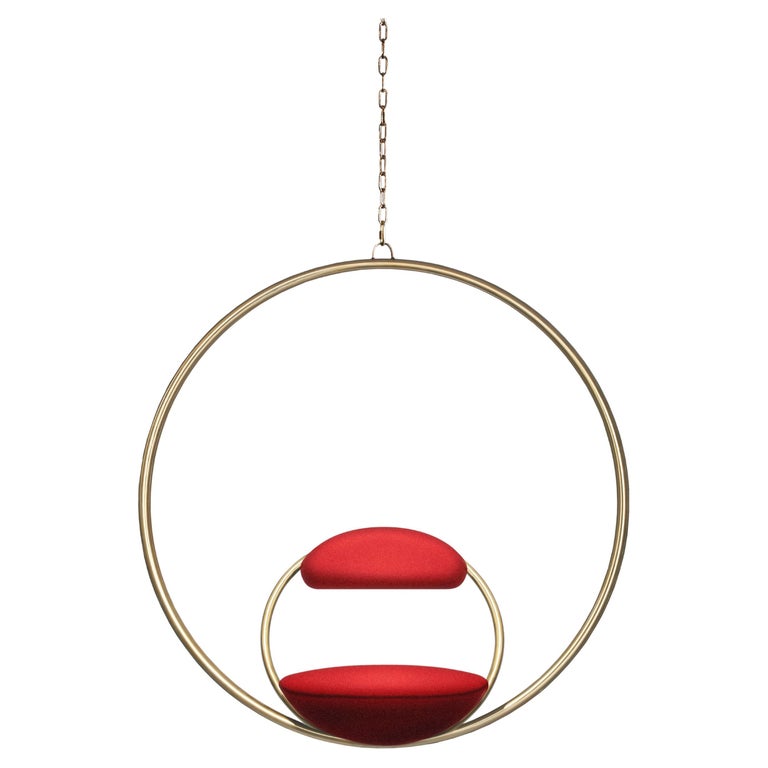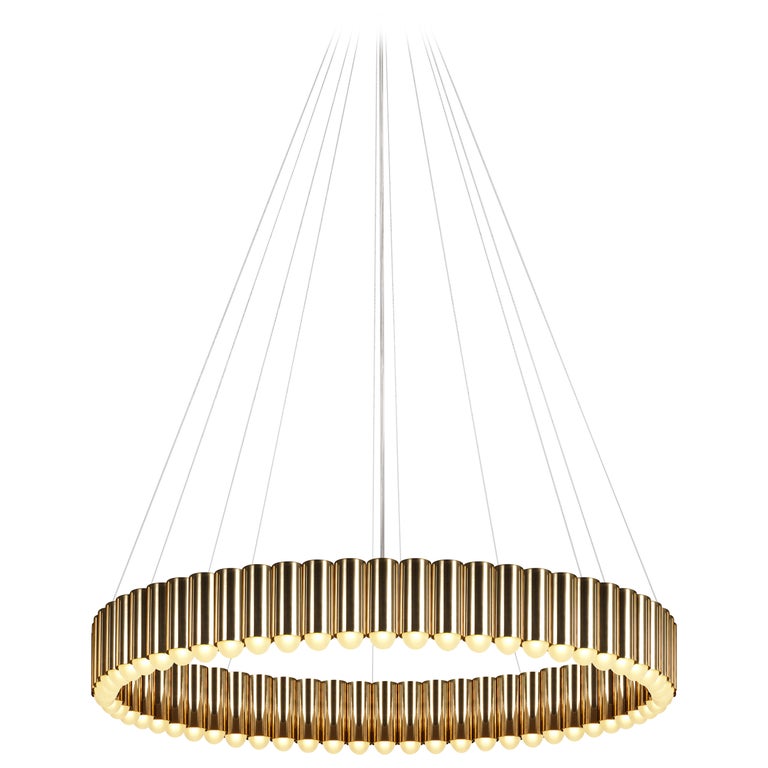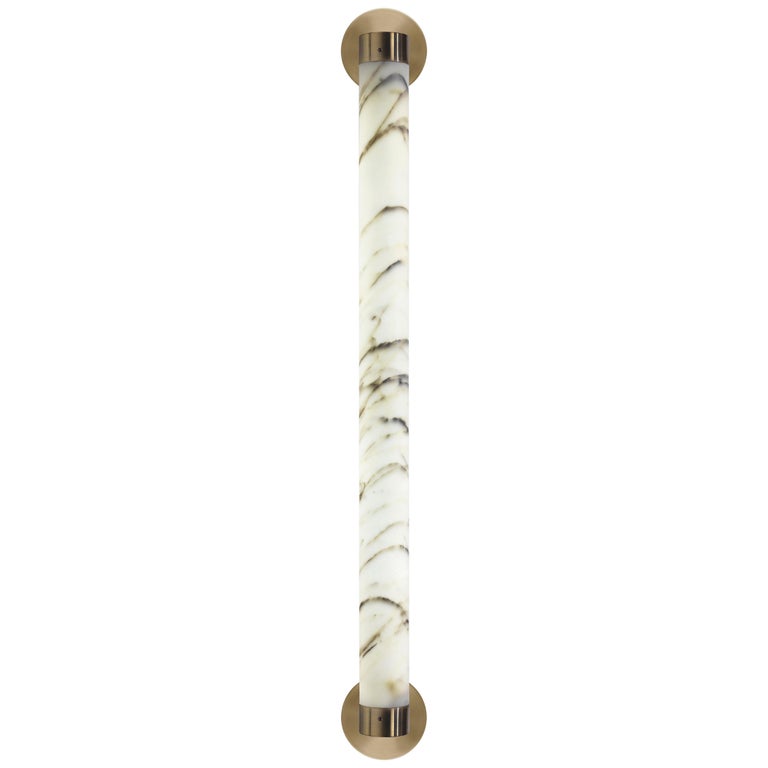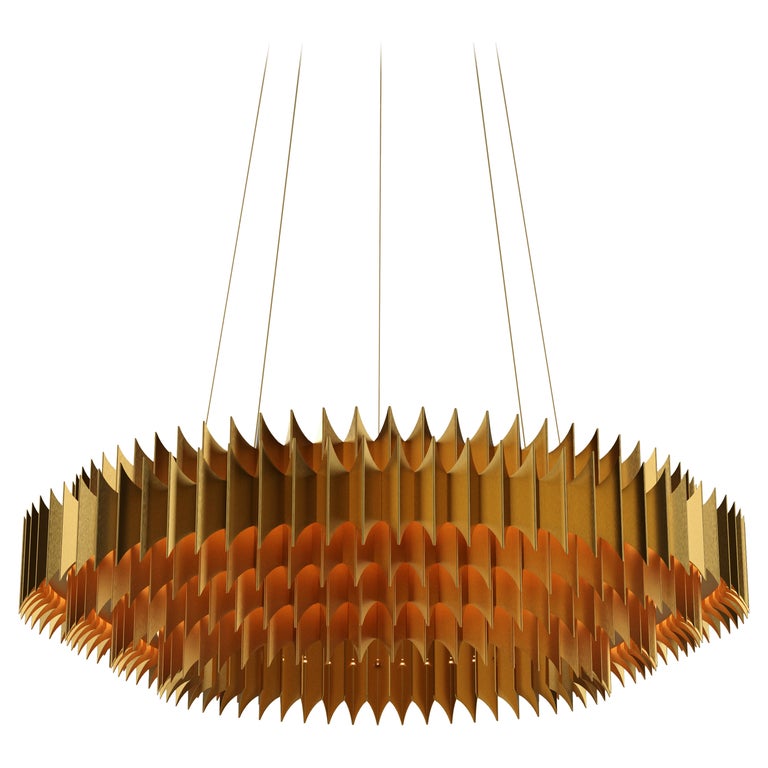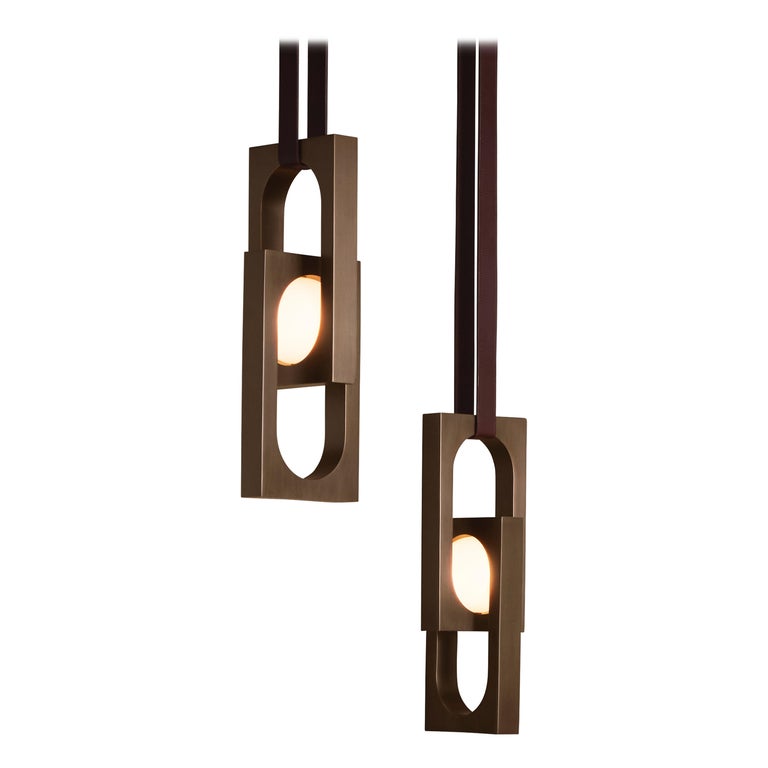July 21, 2024Innovative, experimental, dynamic and avante-garde are a few of the adjectives that have been used to describe the work of British creator Lee Broom, whose lighting and furniture concepts have been wowing the design world since 2007. Crafted from luxurious materials like marble, brass, lead crystal and leather, his fantastical yet functional pieces have made their way into the collections of a host of celebrities and design aficionados, including Elton John and Beyoncé, who swung in Broom’s Hanging Hoop chair in her film Black Is King and subsequently bought the piece for her own home.
A Birmingham native, Broom started out as a child actor, attending theater school from the age of seven and becoming a member of the Royal Shakespeare Company. However, a life on the stage was not his destiny. After winning a fashion-design competition in his teens, he worked with the legendary Dame Vivienne Westwood and went on to study at London’s prestigious Central Saint Martins school of art.

But following graduation yet another career path came into view. “The plan was always to have my own label, but after my degree show, I was very low on funds,” he explains. “To support myself, I went into bars and restaurants in Notting Hill, where I lived, and offered to reupholster chairs, replace curtains and create paint effects. After a while, the side hustle grew into a fully-fledged business, and that’s how I set myself up.”
Still aiming to build his own brand, he launched his first collection, a line of hand-carved chairs called Neo Neon, in 2007. Since then, he has conceived more than 100 sculptural, geometric and often gravity-defying furniture, accessory and lighting designs, as well as a series of ambitious installations (including a carousel ride featuring pieces from his various collections) at both London and Milan design weeks.


A pillar of East London’s design scene since 2010, the talented maker is now based in a converted Victorian warehouse in Shoreditch. “Our building was once an electroplating factory — they used to do furniture for Le Corbusier and Conran, so it has a lot of history,” he says. “And of course, there’s the amazing street art. We have Banksy tours going up and down outside all day long.”
Among Broom’s notable collaborations is a 2017 project with Wedgwood, for which he reimagined the British heritage brand’s traditional Jasperware pottery, taking silhouettes from its 250-year-old archive and updating them with graphic stripes and postmodern elements to create a cutting-edge range of vases and bowls. Designing the Christian Louboutin shop within London’s Harrods department store was another highlight, as was masterminding windows for Bergdorf Goodman in New York in which a selection of his work — including his Crescent pendants, Tube wall lights, Decanterlights and Crystal bulbs — was displayed alongside menswear by Thom Browne.

In 2021, he unveiled the Lee Broom Penthouse, a luxury duplex in New York’s Tribeca neighborhood that serves as both his personal pied-à-terre and a place to host clients and colleagues and, of course, showcase product. “It means people can see pieces in an aspirational, residential environment,” he says. “And when they visit, they really get a glimpse into my home.
Add to all that a monograph, published by Rizzoli in November 2022, as well as Alchemist, his newest lighting range, introduced at the NYCxDESIGN festival earlier this year, and it’s fair to say he’s come a long way since his days in Notting Hill.
Here, the designer talks with Introspective about his inspirations, his aspirations and the things he treasures most.


Where do you go or what do you look at for inspiration?
In New York, it would be the Metropolitan Museum, and in London, it’s the Victoria and Albert Museum. Every time you visit, your focus lands on something completely different. I’m usually interested in a particular period, and for the Alchemist collection, I was inspired by the legend of King Arthur, so I spent a lot of time in the medieval gallery at the Met. The crowns and the coronets from the Middle Ages are really industrial looking, almost like brutalist sculptures, which is a correlation I didn’t originally pick up on.
Is there one piece on 1stDibs that really demonstrates your approach to design?
It would be the Mythos light from the new Alchemist collection, which was inspired by the tale of Prometheus bound by his chains and by ancient jewelry. I spent a lot of time looking at very early pieces that use heavy links, so they became a key part of the design. I always want to eliminate the seams, the screws, the cable, the electrical components — anything that gives clues as to how the piece is made, which is a real challenge. The resulting piece is a sculpture as well as a functional light, and it’s almost impossible to determine how it’s put together. I like that — it’s very typical of how I work.

What is the most challenging design you’ve ever put together in terms of shape and material?
It has to be King, the chandelier from the current collection. I have a very clear way of working: I know what I want, and I have a vision. There’s always a sketch, and we strive to get as close to that as we can. With this piece, we made models and more models, then prototypes. At one point, the design was upside down, and then I halved it and made the leaves longer. We tried different materials — brass, plaster, leather. We even flocked it. Right up until the week before the photo shoot, the design was still changing. In the end, we decided to make it in aluminum. You can get very precise shapes, so all the leaves are laser cut. Then, we fold them by hand, and they’re anodized to make them gold. With the final piece, the LED is hidden, so it just glows, which is very cool. From the very beginning, it took about eighteen months, and at one point I almost said, Let’s do something else. But one member of my team had worked particularly hard on it, so we pushed on. It worked out wonderfully, because the piece won the New York Design Week award for Best Chandelier.


Is there an artist, craftsperson or designer, past or present, whose work you admire?
One of my favorite artists is Paul Evans. He was an iconic American furniture designer, sculptor and artist who was part of the American Craft Movement of the nineteen seventies, and his brutalist metalwork furniture and lighting are just beautiful. I also love the work of Karl Springer, who made really striking pieces in glamorous materials, such as lacquer and chrome. They’re both designers that fall within the late-nineteen-seventies period, which I’m really fond of. I also tap into the Bauhaus era, and there’s usually a nineteen-twenties or thirties element to my pieces.

Is there anyone you haven’t worked with but would like to?
I love the opera, particularly the Metropolitan Opera in New York. It’s in such an incredible building, and I’ve seen some amazing performances, so I would love to design and stage an opera there. I was a child actor, and I grew up in the theater, so from a very young age, I understood the power of presentation and what it meant to be on the receiving end of an appreciative audience. People applauding you, the set, the other actors — you realize how powerful that is. I’ve always injected that into my work, and I see every aspect of what I do as a presentation to a certain extent. So, to actually create a performance or a large spectacle of some kind would encompass all those things.
What item do you treasure so much that you’d never want to part with it?
A leather jacket that was once owned by Keith Haring. He painted a crucifix on the back and gave it to his boyfriend as a gift. I bought it from a gallery in Philadelphia years ago, and it’s now hanging up in the apartment in Tribeca. His studio was on the same street, so it’s in its rightful home.

If you had no budget or space constraints, what would you like to own?
It’s not always about cost, and what I’ve always wanted is a sunken seating area, like a conversation pit. I’ve never lived in an environment where it’s been physically possible to create something like that, as you either need to dig into the foundations or have a high ceiling and build up.

Is there something you haven’t designed yet that you would like to?
It would be a jewelry collection. I love jewelry, and I have lots of pieces, so often I just sketch things I don’t plan to make. There’s a strong similarity between jewelry and lighting, and occasionally, those drawings do end up as lights, which is something you can definitely see in my work.

